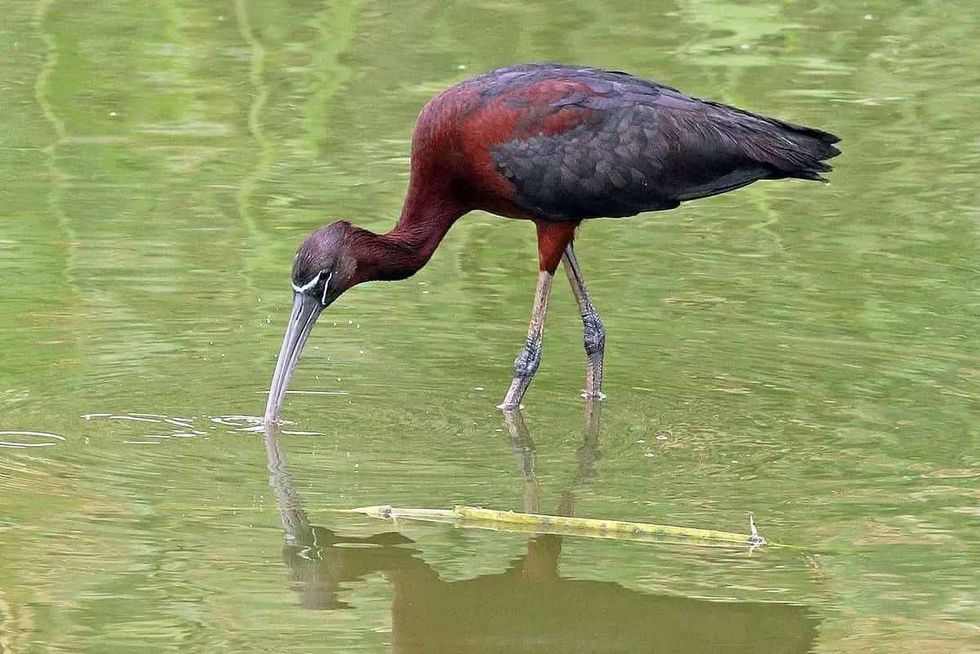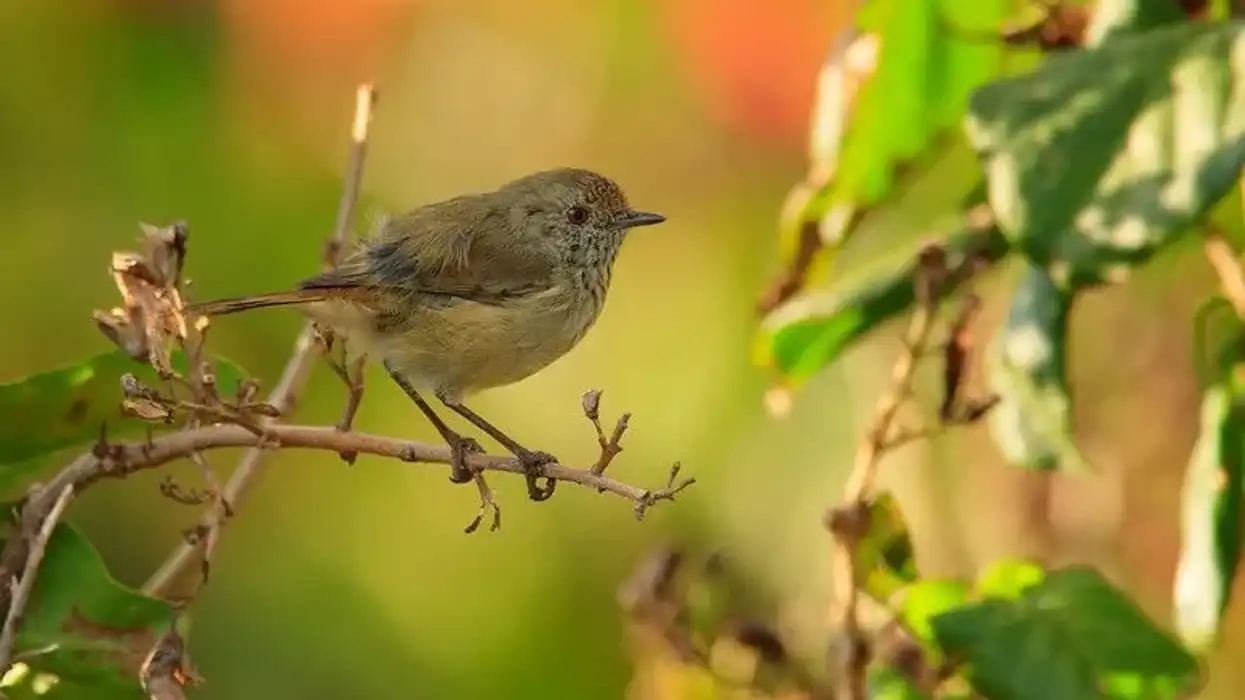Glossy ibis 'Plegadis falcinellus' as its scientific name goes is considered to be one of the 20 odd different species of the Ibis birds. Their scientific name has its origin in the Greek word plegados and the Latin word falcis.
These words mean sickle which refers to the long curved bill of the bird. These birds have Africa as their location of origin. Although over the years they have been known to travel across the Atlantic and enter the South American regions first.
These birds usually feed on insects, fishes, beetles, crabs, and snails. They have a good lifespan lasting around 26 years unless they are hunted by birds of prey or alligators while foraging for their food on the wetlands and in the shallow freshwater.
Read on to know more about this bird's breeding, habitation, behaviors, and other interesting facts. To read more about other animals check scarlet macaw and green heron
Glossy Ibis Interesting Facts
What type of animal is a Glossy Ibis?
Glossy ibis (Plegadis falcinellus) is a wading bird belonging to the family Threskiornithidae of animals.
What class of animal does a Glossy Ibis belong to?
Glossy ibises belong to the Aves class of animals.
How many Glossy Ibises are there in the world?
The ibis species have populations that range from 230,000 to a maximum of 2,220,000 ibises across the world according to the IUCN.
Where does a Glossy Ibis live?
Glossy ibis is a relatively new addition to the North American birds' list. These species originated in Africa and spread to South and North America across the Atlantic ocean. Today these birds are found in Europe, Asia, the Caribbean, Australia, and Spain, too.
What is a Glossy Ibis' habitat?
Glossy ibis (Plegadis falcinellus) is a bird that prefers a warm habitat. Hence, this bird is commonly spotted around the coastal estuaries, lagoons, swamps, salt marshes, paddies with shallow water which makes it easier for them to catch prey with their sickle-shaped bill.
These new world North American birds have their nests near the freshwater or wetlands, on low trees, and in the shrubs. This species is migratory.
A part of their population carries out the migration process during the winter or for the breeding season. Their migration is usually towards Africa and other warm places.
Who do Glossy Ibises live with?
Glossy ibises are seen in their flocks of around 100 or more individuals, especially while migrating. While foraging across the wetlands and marshes, especially during winter, the birds are seen in smaller groups.
During the breeding season, they nest closer to their own and other species like herons. This nesting space of their populations are called colonies. A group of these birds is called a congregation or a wedge.
How long does a Glossy Ibis live?
This species of glossy ibises' lifespan would range from 21 to a maximum of 26 years of age.
How do they reproduce?
Glossy ibises are monogamous birds. The male and female ibis bird, after being paired, engage in mating during the breeding season that ranges from the months of September to April.
These ibises start building their nest along with others in the species in the colonies. Their flocks create their colonies in the wetlands along with other species of birds during the breeding period. The nest is built with dry twigs, reeds, and sticks on shorter trees or shrubs.
The female glossy ibis then lays the eggs in the nest and both the parents incubate the eggs for almost three weeks, 20-22 days. After the eggs hatch, the parents take care of the babies and look after their feeding.
The male and female both protect their family from predators. Even though these chicks can leave their nesting site just after the seventh day, ibises choose to look after the babies for six to seven weeks.
What is their conservation status?
According to the International Union for Conservation of Nature (IUCN), the status of these ibis birds' population is marked as Least Concern.
Glossy Ibis Fun Facts
What do Glossy Ibises look like?

This species of ibis is a medium-sized dark bird. They have brown-red plumage with a greenish-blue tinge near the neck and on the wings.
Their legs are brown in color and stalky. These medium-length stalky legs help them to stand in the shallow waters and muddy marshes while feeding with the long bill.
Their long bill is brown-gray in color and has sensory receptors to help them find and hunt for their food. The breeding adults have reddish plumage while the non-breeding and the juvenile glossy ibis range has a pale and gray-brown plumage.
How cute are they?
This species of birds are dark in color and look pretty while the bird is in flight. However, they are not exactly considered to be cute.
How do they communicate?
This species of ibis bird communicates via different vocalizations. They make a throaty murmur sound while foraging for food.
The glossy ibis call is a more guttural sound with a single 'grrr' note that they use to communicate among themselves. Apart from vocalizing, they use their touch and chemical senses to perceive any nearby threat or even to hunt for food.
How big is a Glossy Ibis?
The average length of a glossy ibis is between the range of 19–26 in (48–66 cm) which makes them four to five times bigger than the sword-billed hummingbird. The range of its wingspan is between 31–41 in (80–105 cm) and it has a height of up to 20 in (50.8 cm).
How fast can a Glossy Ibis fly?
Glossy ibis flocks are usually spotted taking flight at good speeds, especially during their winter and breeding migrations. However, their exact speed is not known.
How much does a Glossy Ibis weigh?
This new world glossy ibis (Plegadis falcinellus) bird's weight range is between 1.1-2.1 lb (485-970 g).
What are their male and female names of the species?
Ibises do not have separate names based on gender.
What would you call a baby Glossy Ibis?
The babies of this species are called chicks.
What do they eat?
Ibises are omnivores with a major portion of their diet focusing on crustaceans, reptiles, and flies. They feed on fish, snakes, crayfish, worms, insect larvae, snails, crabs, and leeches that are present in the shallow waters, mud, and marshes.
They do this with the help of their long bill. On the ground, their diet might also include a wide range of insects, lizards, dragonflies, frogs, and beetles, as well as seeds.
Are they dangerous?
These dark birds are not usually aggressive in nature. Their population behavior focuses either on foraging in flocks for feeding themselves and their family or resting under the sun to dry themselves by opening their wings without showing any aggressive gestures.
However, this species can try to defend their nest in mixed colonies. They do not like other birds like ibis or herons meddling with their nest and might stand up to them.
Would they make a good pet?
These birds from Africa are considered to be wild in nature and there is no record of their population being domesticated. Hence it is not yet known whether they can be a good pet or not.
Did you know...
There were 28 different species of the ibis bird, out of which six species went on to become extinct. Out of the remaining species of ibis birds, the glossy ibis (Plegadis falcinellus) is considered to have its origin in Africa.
How does the glossy ibis find apple snails?
Glossy ibises consume around 40-60% of their diet with apple snails especially in South and North America. As these birds forage for their food in the shallow and freshwater wetlands, they find these snails there in abundance.
They use their long beak to locate and get hold of their prey's shells in wetlands and in marshes. They then carve out the snails from the shells with the help of their curved beak.
How can you tell the difference between a glossy ibis and a Hadada ibis?
Hadada ibis is one of the species belonging to the ibis bird family. At the first glance, there might be confusion between this and the glossy ibis species of bird.
But here are a few observations that help distinguish the two birds apart.
Hadada is slightly bigger in size with an all-brown body, big eyes with a white border, a brown-black long bill with a red top, and a white mustache-like stripe.
On the other hand, glossy is smaller in size with a dark body with a tinge of shiny cobalt blue near the neck, and a light brownish-gray bill with small round beady eyes and no white, mustache-like stripe.
Here at Kidadl, we have carefully created lots of interesting family-friendly animal facts for everyone to discover! Learn more about some other birds including kiwi, or pelican.
You can even occupy yourself at home by drawing one on our Hadada ibis coloring pages.










